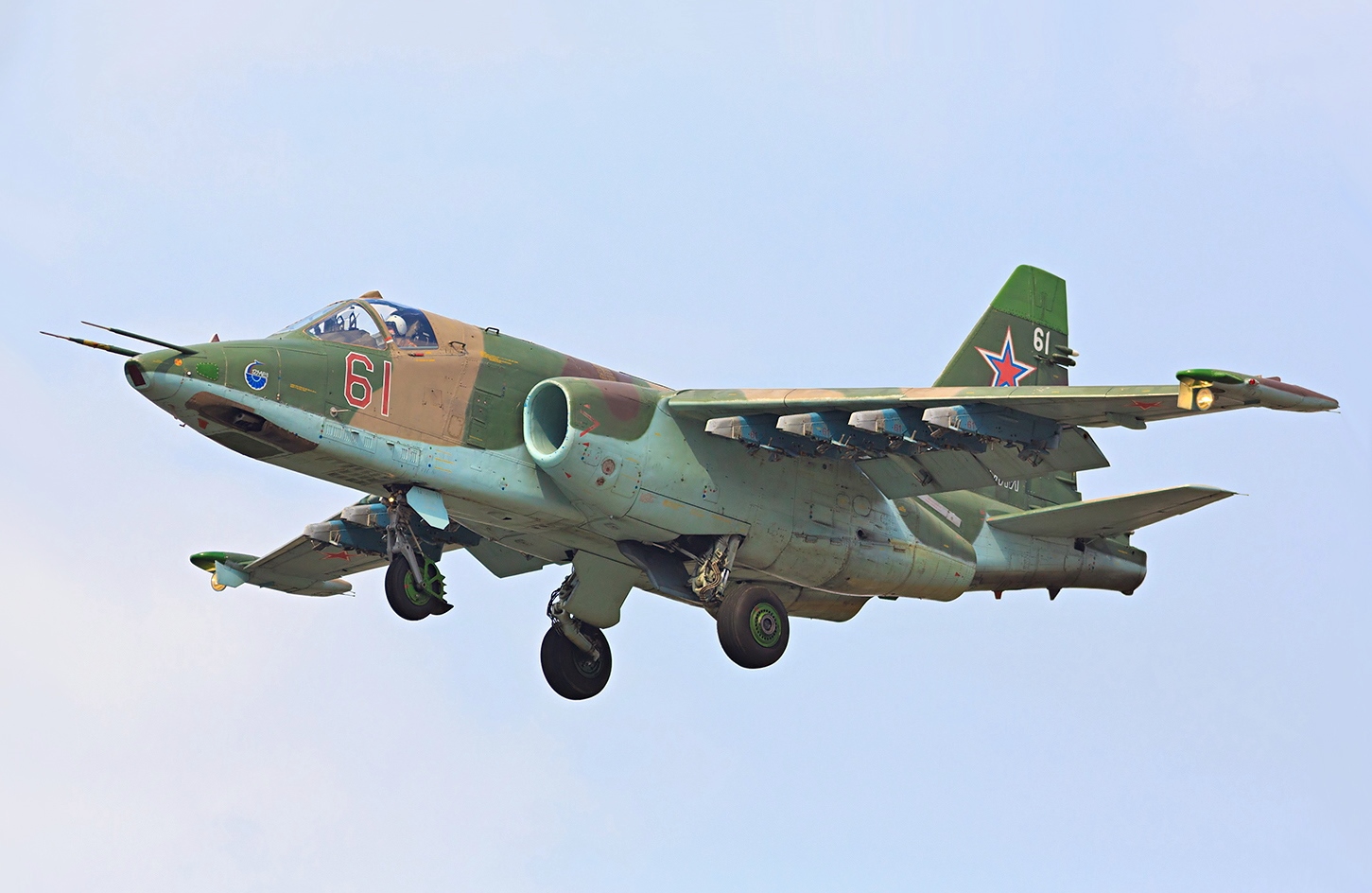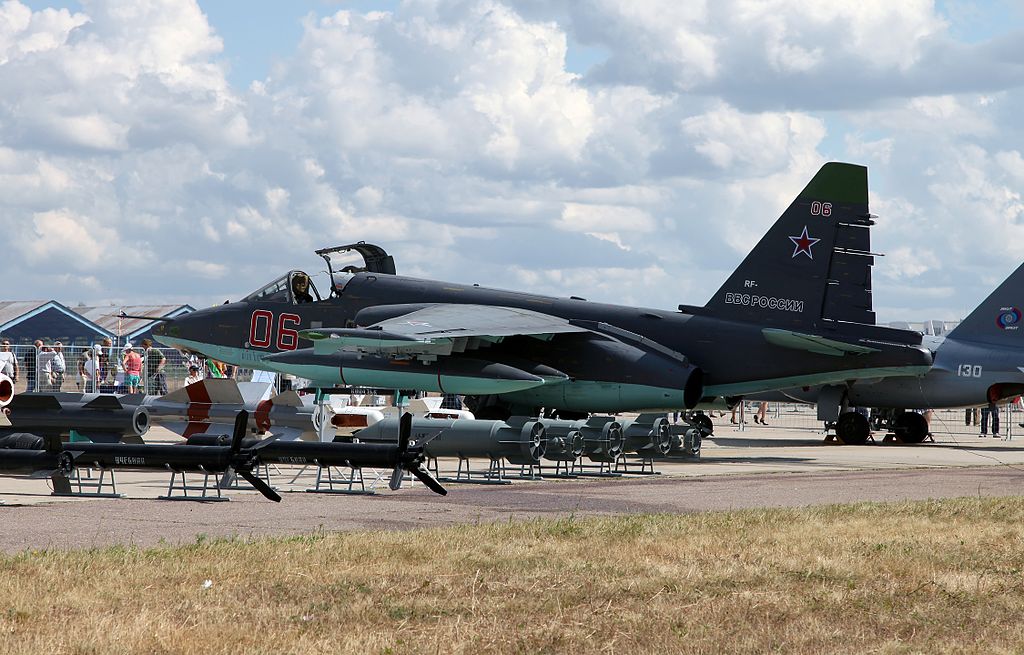A video has recently emerged of Su-25 attack aircraft successfully evading two anti-aircraft missiles, reportedly fired from Man Portable Air Defense Systems (MANPADS) belonging to Ukrainian ground troops.
Harpoon Horror! US ‘Confirms’ Russian Vessel That Was Sunk By Ukraine In June Was Fired From Flatbed Truck
7 Times Hotter Than Sun, Nuclear Fusion Reactor Reaches 100 Million Degrees Celsius In South Korea
The footage, which lasts for about 1 minute and 10 seconds, provides the cockpit view of how the pilot of the Su-25 managed to dodge two missiles one after another from two different directions.
Initially, the video shows the Su-25 flying low and attacking Ukrainian positions, but 40 seconds later, a projectile is seen on its right at a distance of several meters. The pilot manages to avoid that missile. However, another missile is seen flying close to the aircraft only six seconds later.
Промах двох ракет ПЗРК по російському штурмовику Су-25. pic.twitter.com/81PCZNpC21
— Ridnа_Vilnа ?? #Save_Azovstal_Defenders (@ua_ridna_vilna) September 11, 2022
It remains unknown to which side the Su-25 shown in the video belongs. According to Russian-language media outlets and Ukrainian sources, the aircraft belongs to the Russian Air Force (VKS).
This is a second documented instance of Su-25 evading missiles fired from MANPADS. In May, another video was released of two Su-25s dodging the shoulder-fired missiles fired at them in the Severodonetsk region in east Ukraine.
A pair of #Ukrainian SU-25 attack aircraft, at low altitudes, skillfully escape from the shelling of #Russian #MANPADS in the Severodonetsk region.#Ukraine #UkraineRussianWar #Ukrainian #Russia #SU25 #RussianUkrainianWar pic.twitter.com/eunxjRN09B
— News in Support of Ukraine (@uasupport999) May 15, 2022
A Ukrainian individual who claimed that the two Su-25s belonged to Ukraine filmed this video from the ground.
In the video, the two aircraft can be seen flying a low, unpredictable path at a very high speed while dropping a lot of flares along the way to confuse the Infrared (IR) sensors aboard the anti-aircraft missiles used for guidance.
Threat Of MANPADS
According to experts, the threat of MANPADS in Ukraine has revived the low-level tactical flying needed to evade anti-aircraft missiles and other air defense systems.
This tactic has not been seen since the Falklands War of 1982 because in the conflicts that transpired later, several air forces, particularly the ones involved in air campaigns like the Desert Storm in Iraq, Allied Force in the Balkans, and Unified Protector in Libya, could fly at medium or high-level altitudes because of the technological superiority they enjoyed over their adversaries who lacked the adequate air defense network to secure the skies.
?️A pair of Ukrainian Su-25 casually flying at low altitude above a highway #UkraineRussiaWar pic.twitter.com/9YyVGjiB79
— MilitaryLand.net (@Militarylandnet) September 8, 2022
The war in Ukraine is being fought between militaries of the two nations that have fielded an array of air defense systems, posing a massive threat to aircraft operations, thereby making low-level flying relevant again.
Su-25 Grach (‘Rook’)
The Su-25 Grach (‘Rook’) is Soviet-era close air support (CAS) aircraft, known by the NATO reporting name Frogfoot.
Designed by the Sukhoi Design Bureau, it is intended for attacks on small mobile and stationary ground targets. The aircraft can also engage low-speed air targets at the forward edge and in the nearest tactical and operational depth.

The aircraft has a maximum take-off weight of 17,600 kilograms and is powered by the Soyuz/Gavrilov R-195 turbojets, each generating a thrust of 44.17kN. It can attain a top speed of 950 kilometers per hour.
The range of the Su-25 is 750 kilometers, while its combat radius is 375 kilometers. The aircraft can climb at a rate of 58 meters per second and has a service ceiling of 7000 meters.
The Frogfoot has ten underwing pylons that can carry a range of air-to-air and air-to-ground weapon systems, including the Kh-23, Kh-25ML, and Kh-29l air-to-ground missiles, and the R-3S and R-60 air-to-air missiles on the smaller outboard pylons.
The aircraft can be fitted with UB-32A pods for 57mm S-5 rockets, B-8M1 pods for 80mm S-8 rockets, S-24 240mm guided rockets, and S-25 330mm guided rockets.
The aircraft also has a twin-barrel gun, the Gryazev-Shipunov GSh-30-II 30 mm, installed on the bottom side of its fuselage on the port side, which can carry 250 rounds of ammunition and is capable of firing at a burst rate of 3,000 rounds per minute.
The SPPU-22 gun pods can also be installed on the underwing pylons, which carry the GSh-23 mm twin-barrel guns, each with 260 rounds of ammunition.
The latest variant of the Su-25SM, which entered the service with the VKS in 2007, has a navigational computer, Pastel countermeasures suite, SUO-39 fire control system, and Phazotron Kopyo-25M radar.

The first Su-25 entered service with the Soviet Air Force on July 19, 1981, and was soon deployed by the Soviet Union in Afghanistan against the Mujahideen. A total of 23 Su-25s were shot down by Mujahideen fighters using various anti-aircraft weapons, with the last shot down near Kabul in January 1989.
The export version of the aircraft, the Su-25K, has been sold to 17 countries and has seen action in several 21st-century conflicts.
In 2014, Iraqi Su-25s flew 3,562 missions between June 2014 and December 2017 against the Islamic State (ISIS), while in Syria, around a dozen Su-25s flew 1,600 missions and dropped 6,000 bombs on several ISIS positions by March 15, 2016. In 2020, Armenia and Azerbaijan used Su-25s during the Nagorno-Karabakh war.
Ukraine and Russia have used Su-25s for air-to-ground attacks in the ongoing Ukraine war.
According to the figures compiled by the military tracking blog Oryx based on visual confirmations, 31 Su-25s have been destroyed, with 20 belonging to Russia. At least one Su-25 on both sides has suffered damages, with the Ukrainian one known to have been damaged beyond repair.
- Contact the author at tanmaykadam700@gmail.com
- Follow EurAsian Times on Google News




